#symphyotrichum cordifolium
Photo


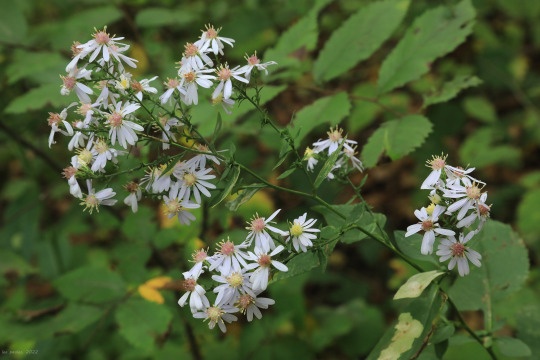
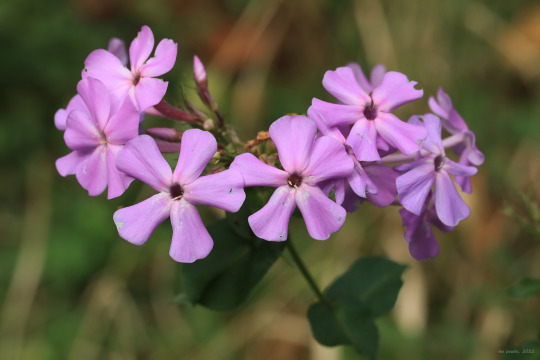
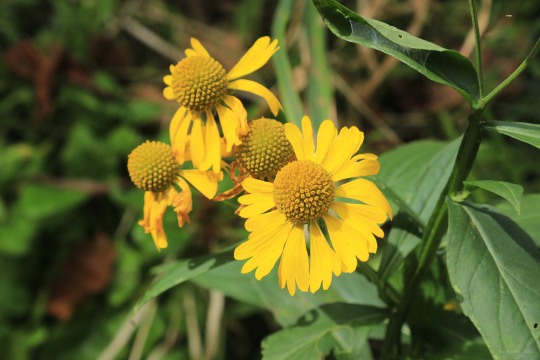



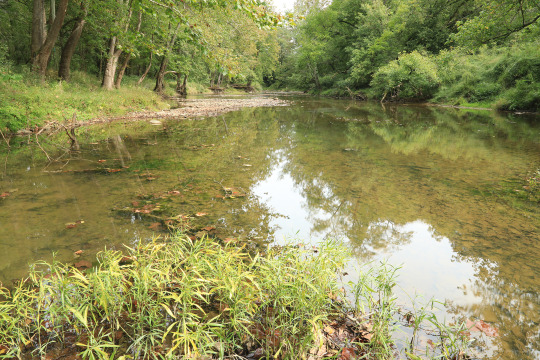
Early fall color along Dunkard Creek at the Mason-Dixon Historical Park. Most notably, broadleaved goldenrod (Solidago flexicaulis), also known as zig-zag goldenrod, is now in bloom. This is one of my favorite wildflowers of any season - it grows in gorgeous clumps with brilliant gold flower spikes and broadly-ovate, sharply serrated foliage. It’s better behaved than most goldenrods and is ideal for a bright pop of autumn color in a native wildflower garden.
From top: broadleaved goldenrod, one of two species in this area with flowers growing from the leaf axils; blue wood aster (Symphyotrichum cordifolium), a common woodland aster that blooms right up to the first frost; garden phlox (Phlox paniculata), also known as tall phlox and fall phlox, a tall, wetlands-loving perennial that blooms from July through early October in Central Appalachia; sneezeweed (Helenium autumnale), which loves the marshy edges of ponds, lakes, and streams; short’s aster (Symphyotrichum shortii), a woodland aster with a special fondness for limestone bluffs.
#appalachia#vandalia#west virginia#pennsylvania#fall#autumn#dunkard creek#mason-dixon historical park#solidago flexicaulis#broadleaved goldenrod#zig-zag goldenrod#symphyotrichum cordifolium#blue wood aster#phlox paniculata#garden phlox#tall phlox#fall phlox#helenium autumnale#common sneezeweed#symphyotrichum shortii#short's aster#wildflowers#flora
56 notes
·
View notes
Text

Symphyotrichum cordifolium / Blue Wood Aster at the Sarah P. Duke Gardens at Duke University in Durham, NC
#Symphyotrichum cordifolium#Symphyotrichum#Asterae#Asteraceae#Blue wood Aster#Aster#Native plants#Native flowers#Flowers#Nature photography#photographers on tumblr#Sarah P. Duke Gardens#Duke Gardens#Duke University#Durham#Durham NC#North Carolina
2 notes
·
View notes
Photo

Blue Wood Aster or Symphyotrichum cordifolium (I Think) Gone to Seed [OC][3024 x 4032]
0 notes
Photo

Aster Blossoms ~ Blue Wood Aster ~ Aster cordifolius ~ Symphyotrichum cordifolium ~ Heartleaf Aster ~ Aster à Feuilles Cordées ~ Aster á Feuilles en Cœur ~ Red Sea Coast ~ Ain Sokhna ~ Egypt #Aster #BlueWoodAster #Astercordifolius #Symphyotrichum #HeartleafAster #AsteràFeuillesCordées #AsteráFeuillesenCœur #AinSokhna #RedSea #Egypt #flowers #blossoms #blooms #insects #Entomology ~ www.flickr.com/photos/rachidh/albums https://www.instagram.com/p/CZpS1ImKBDb/?igshid=NGJjMDIxMWI=
#aster#bluewoodaster#astercordifolius#symphyotrichum#heartleafaster#asteràfeuillescordées#asteráfeuillesencœur#ainsokhna#redsea#egypt#flowers#blossoms#blooms#insects#entomology
0 notes
Text

Blue-wood aster (Symphyotrichum cordifolium)
2 notes
·
View notes
Photo


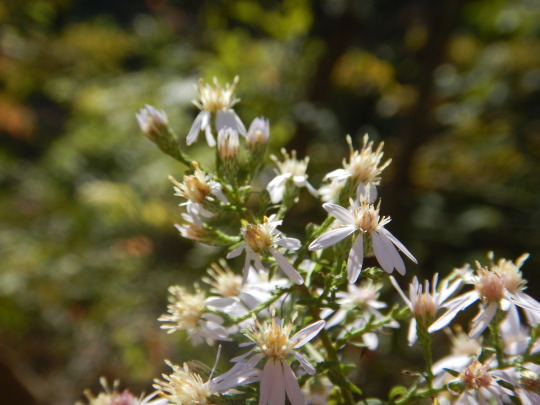

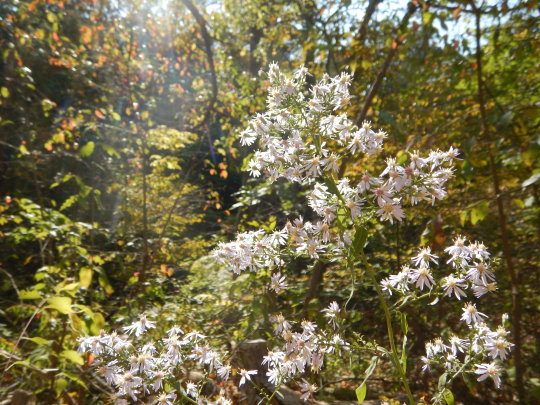
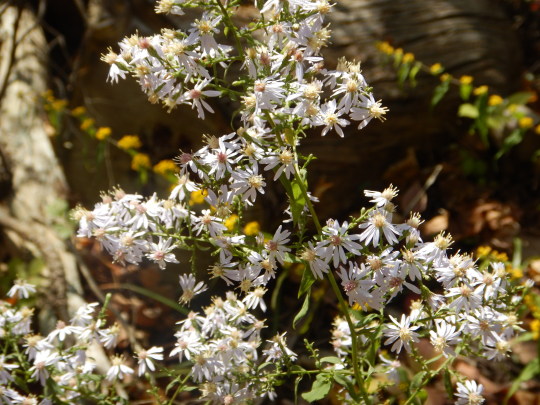

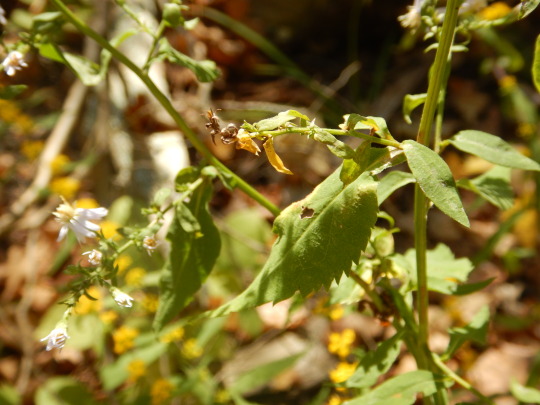
Symphyotrichum cordifolium and Symphyotrichum undullata are very similar wood asters.
It makes it difficult to explain these species unless you have them right next to each other. My opinion on both of them in keys is that they may be the most frustrating species to get delineate. For this one I really had to ask a legitimate expert for trick tips. This is the answer from him:
“Well, as I have said, plants don’t read books and this is one of those times when you really just have to practice to get small non direct qualitative morphological features in order to really get to know them. Start with Symphyotrichum cordifolium that should retain a smaller winged petiole of similar size and a more cordate leaf on all leaves, If you are looking at the Symphyotrichum undulatta, the leaves are not always cordate and many of the cordate ones have a wider petiole with taper getting a larger wing at the base of the leaf where it connects to the node, they don’t always undulate either and the Symphyotrichum cordifolium doesn’t always have perfect teeth or flattened leaves, plants are allowed to be depauperate.” -Dr. M. A. Vincent.
Here we have a very robust S. undullata growing in Clifton Gorge, SNP, Greene co. Upper ridge. The plants behind it are bluestem goldenrod, Solidago caesia
#ohio#wildflowers#botany#ecology#asteraceae#asters#symphyotrichum#symphyotrichum cordifolium#symphyotrichum undullata#flowers#cottagecore
10 notes
·
View notes
Photo

Blue Wood Aster or Heartleaf Aster, Symphyotrichum cordifolium (by me)
#Blue Wood Aster#Heartleaf Aster#Symphyotrichum cordifolium#Symphyotrichum#Asteroideae#Asteraceae#Asterales#flowers#plants#forest#autumn#Merrill Creek Reservoir#Warren County#New Jersey#mine
27 notes
·
View notes
Text
15 New ID's While Mushroom Hunting
15 New ID’s While Mushroom Hunting

Arisaema dracontium (Green Dragon) on 4-23-20, #690-2.
Hello everyone! I hope this post finds you all well. Thursday… What an afternoon! It had rained earlier and I was itching to go mushroom hunting for Morels. It had been cloudy but it started clearing off in the afternoon so I decided to go to try out the woods on a friend’s farm. Now, I would mention his name and the location but you know I…
View On WordPress
#Arisaema dracontium (Green Dragon)#Arisaema triphyllum (Jack-In-the-Pulpit)#Cardamine concatenata (Cut Leaved Toothwort)#Carex albursina (White Bear Sage)#Coprinellus micaceus (Mica Cup)#Dicentra cucullaria (Dutchman&039;s Breeches)#Erythronium albidum (White Fawnlily)#Geranium carolinianum (Carolina Crane&039;s Bill)#Phlox divaricata (Wild Blue Phlox)#Polygonatum biflorum (Smooth Solomon&039;s Seal)#Ranunculus parviflorus (Stickseed Crowfoot)#Symphyotrichum cordifolium (Common Blue Wood Aster)#Tremella mesenterica (Witch&039;s Butter)#Urnula craterium (Devil&039;s Urn)#Valerianella radiata (Beaked Corn Salad)
0 notes
Text
Symphyotrichum cordifolium
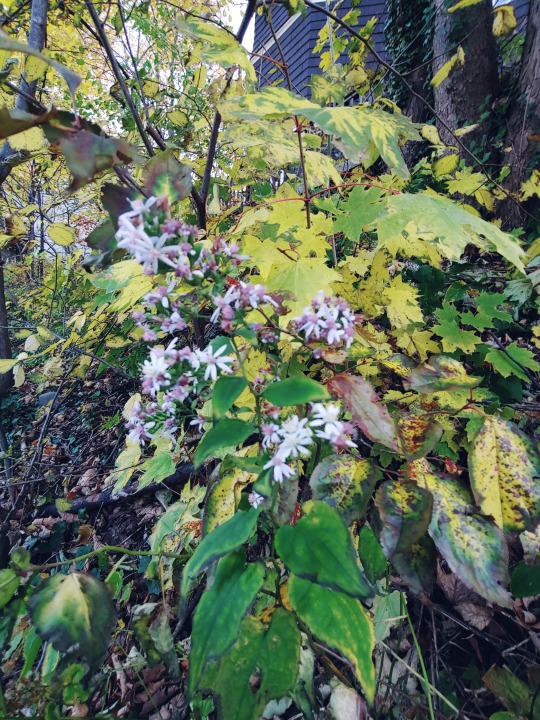
Symphyotrichum cordifolium *previously known as Aster cordifolius
Common Names: Blue wood-aster, broad-leaved aster, heart-leaved aster
Phonetic Spelling: sim-fy-oh-TRY-kum kor-dih-FOH-lee-um
(personal mnemonic: “symphyo-” symphony, yo -> groupings of “-trichum” tricorn hat-> feathers-> hairy flowers, “cordifolium” cord -> yarn -> red heart yarn ->heart leaves)
The clearest identifiers of this plant are its pale purple-blue flowers, toothed heart-shaped leaves (commonly at the base of the plant, with ovate leaves near the top), and a height between 2 and 5 feet. It blooms in the late summer (August - September), and flowers open with yellow centers that turn redder over time (this specimen is at the very end of its flowering season).
Symphyotrichum cordifolium is native to the eastern to central U.S. and Canada. It is somewhat weedy and thrives in woodlands, meadows, and stream banks. You can distinguish this plant from other asters by its broad, heart-shaped leaves (compared to the more arrow-shaped leaves of other asters) and the less dense flowers with hairier centers. The flowers attract pollinators and the seeds are eaten by birds and other wildlife. This plant is not palatable to humans.
Preferred growing conditions:
Moist to dry well-drained soil
Full Sun to Part-Shade
Zones 3-8
These photos were taken in Boston’s Mission Hill Neighborhood on November 8th 2020



Above: Symphotrichum cordifolia going to seed
Below: an additional photo (because the rest of mine are blurry) that clearly shows the basic leaf and flower shape.
(Image: from Michael Hough, http://www.thismia.com/S/Symphyotrichum_cordifolium.html)

Web References:
https://plants.ces.ncsu.edu/plants/symphyotrichum-cordifolium/ (very informative)
https://www.missouribotanicalgarden.org/PlantFinder/PlantFinderDetails.aspx?kempercode=a788
https://en.wikipedia.org/wiki/Symphyotrichum (if you are interested in learning more about this species’ taxonomy)
0 notes
Photo

Far Harbor/Fallout 76 Consumable: Aster
Aster is a consumable item featured in the Fallout 4 add-on Far Harbor and Fallout 76.
Characteristics
A mutated flower from the genus Aster. Its purple color is muted relative to its pre-war ancestors.
In Fallout 4 Aster a synth in Acadia will pay 8 caps per aster delivered to her.
In Fallout 76 during an intercontinental ballistic missile nuke event, harvested aster (red hot bloom) will yield raw crimson flux.
Value
5
Weight
0.1 (Fallout 4)
0.25 (Fallout 76)
Effects
Fallout 4
+10 Hit Points over 5s
+2 Radiation
When survival mode is active, this item will reduce hunger by 5 points.
Fallout 76
+5 Radiation
2% Disease Chance
1% Food
Addiction
No
Crafting
Fallout 4
Component of:
Fire Belly
Seasoned rabbit skewers
Vim Captain's Blend
Fallout 76
Component of:
Old Possum
Steeped aster tea
Simple aster tea
Locations
Fallout 4
One in Aster's area in a planter right in front of Cog.
Three can be found at the base of the stairs to the right of entrance to Acadia. More can be found behind the building. Two near the lower chain link fences out front to the west. At least 10 total all around the area.
Two can be found at the top of Vim! Pop factory, on the table near terminal in Vim brewing room control center.
Lots in various locations around the flooded houses near Haddock Cove.
Five can be found right near where your boat docks at Red Death Island during The Great Hunt.
Twelve can be found around an abandoned house exactly between Waves Crest Orphanage and Brooke's Head Lighthouse.
Fallout 76
Three plants can be found outside the East Mountain lookout, near the rusty jeep.
Two plants can be found northeast of Relay tower EL-B1-02.
There is a small field of aster on the north side of Palace of the Winding Path.
Around the Whitespring Resort, in the parking with all the robots.
At the Philippi Battlefield Cemetery, planted at several graves.
One plant can be found halfway between Prickett's Fort and Knife Edge, next to a telephone pole.
Behind The Scenes
According to the Vault 94 greenhouse terminals in Fallout 76, the aster seen in-game is of the species Symphyotrichum cordifolium (common blue wood aster).
Sources:
https://fallout.fandom.com/wiki/Aster_(consumable)
https://fallout.fandom.com/wiki/Aster_(Fallout_76)
#aster#consumables#fallout 4#fallout#Far Harbor#far harbor consumables#aid#items#flowers#info#pic#My posts#video games#plants#fallout 4 consumables#fallout 76#fallout 76 consumables
0 notes
Text

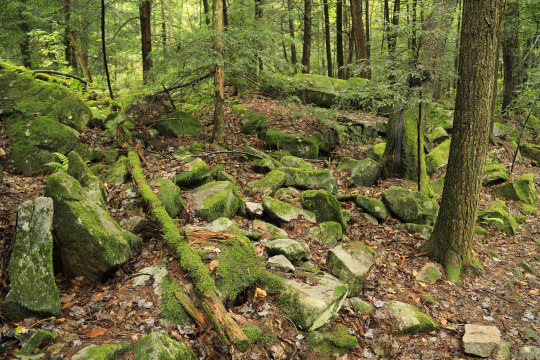




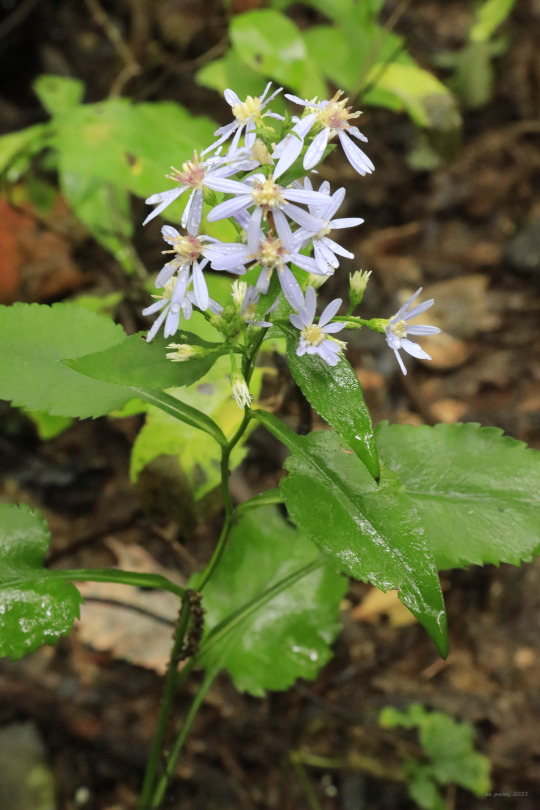

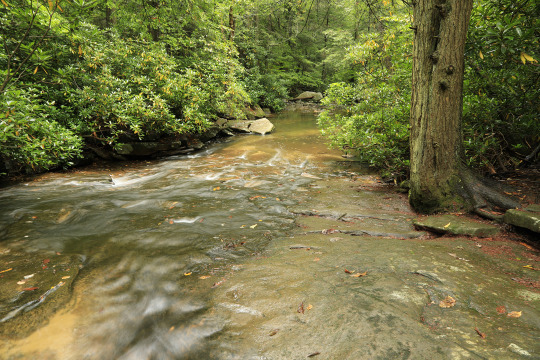
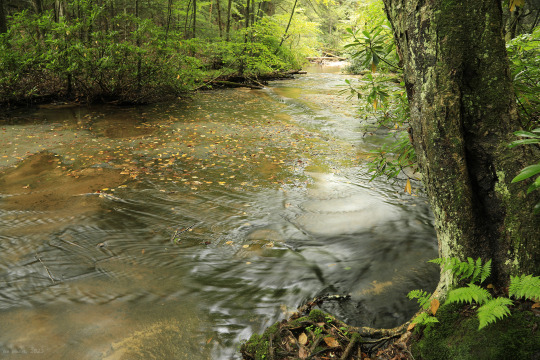
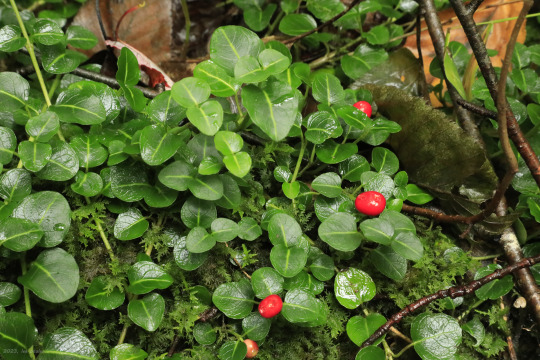



Dreary weekend in NC-WV, but once I got over my hangover from the WVU-Texas Tech game this morning, I managed to sneak in a quick fall hike on the Virgin Hemlock Trail in Coopers Rock State Forest. The asters are out in force and quite beautiful this fall. Among them are (from top): purplestem aster (Symphyotrichum puniceum); frost aster (Symphyotrichum pilosum), also known as awl aster; calico aster (Symphyotrichum lateriflorum); and blue wood aster (Symphyotrichum cordifolium).
#appalachia#vandalia#west virginia#wildflowers#flora#fall#coopers rock state forest#virgin hemlock trail#little laurel run#fungi#purplestem aster#purple-stemmed aster#frost aster#awl aster#hairy white oldfield aster#calico aster#blue wood aster#canada goldenrod#partridge berry#partridgeberry#common puffball
124 notes
·
View notes
Photo

در ستایش #علف_هرز (ستارهای) On #weed appreciation (Blue-wood Aster) Symphyotrichum cordifolium https://www.instagram.com/p/B3ONOK3A1dF/?igshid=1xiudxute83v
0 notes
Text
PERENNIAL: Symphyotrichum cordifolium (Blue Wood or Heart-leaved Aster)
PERENNIAL: Symphyotrichum cordifolium (Blue Wood or Heart-leaved Aster)
Tried and True Native Plant Selections for the Mid-Atlantic
Female orange sulfur butterfly feeding on Symphyotrichum cordifolium flowers in October. Photo © Mary Free, 2019-10-07, Arlington, Virginia.
Formerly classified as Aster cordifolius, this native, found along forest edges and ledges in the eastern half of North America, would be a welcome addition in a residential shade garden.…
View On WordPress
0 notes
Text
Heart-leaved "Aster" (Symphyotrichum cordifolium) [OC][1077x1918]
http://dlvr.it/NLx8wX #sfwp #new #reddit
0 notes
Photo


There is a clump of somewhat blue tinted tops of plants in the background that belongs to the
Common Blue Wood Aster
Symphyotrichum cordifolium,
although it’s a common sight along the majority of open woodlands and forest edges everywhere in the eastern half of the United States, it’s still fun to see a large colony in bloom in the numbers that should be represented. Where I live in Cincinnati, our edge habitat and open woodland is now inundated with invasive bush honeysuckle, Lonicera maackii, which prevents any large clusters from being able to colonize in large numbers. The sad truth is that Cincinnati, minus the well stewarted parks and private land, has lost most of it’s valuable mid summer and late summer flora and pretty much all of its edge habitat. The ignored need for invasive removal is starting to make even the usually common species uncommon.
Photographed along a logging road section in Red River Gorge, Kentucky.
#Cincinnati#ohio#cincinnati ohio#invasive species#invasive removal#rant#botany#sustainability#plants#nature#kentucky#blue#wildflowers#wild flower#blue flower#blue flowers#symphyotrichum cordifolium#plantblr
11 notes
·
View notes
Photo
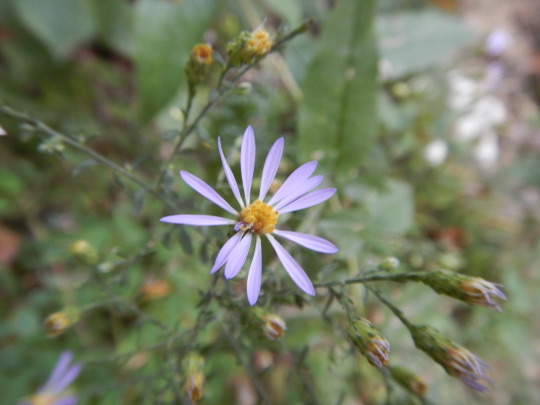



One of the many woodland Symphyotrichum spp. This one is blue flowering, occurs with cordate foliage, leaf section is not offset cordate closer to the petiole like Symphyotrichum urophyllum, and this one is also not aggressively dentate like S. cordifolium or Euribia divaricatus; the Euribia spp. is called white wood aster too, so it may help the issue with coloration of flower. Instead what we have here is Symphyotrichum drummondii, or Drummond’s blue wood aster, and upland wood aster, known for karst preference or dry oak upland forest.
Here it’s along an semi exposed dolostone area with ferrous parental top soil (iron rich clay), growing in sympatry( together) with Solidago flexicaulis (Zig Zag goldenrods), at Clifty Falls State Park, IN.
#solidago flexicaulis#solidago#in#indiana#clifty falls#wildflowers#botany#plantblr#ecology#symphyotichum#symphyotrichum drummondii
24 notes
·
View notes